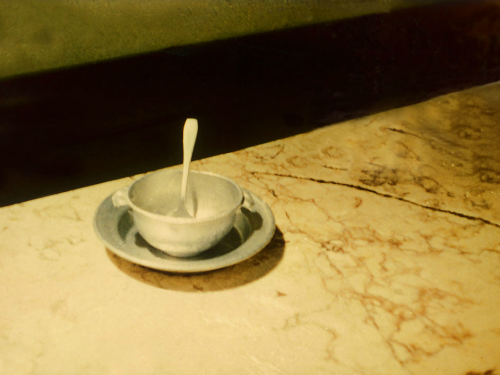
“In 1973 Antonio Reis devotes a film to the drawing work of a peasant, Jaime Fernandes, shot in the place of his psychiatric isolation. Right from the start I am struck by the subtlety of the approach, finally distancing itself from this despicable apology of madness as the source or cause of talent, of which we have known from Artaud to Rodez, the disastrous and irresponsable elogies. Maybe it’s all of this film’s poetic toughness: a poem of suffering, of the clarity of solitude. Is this a film about an oeuvre, about its conditions, its unfathomable seclusion? On a faraway world, a delicate soul that has had to walk in circles in a hospital built like a bullfighter’s arena; the detail of the water, of stone, of grass, the lines of the hills in turn closing up the circus, where every thing, one after another, becomes a fortress of solitude?”
Jean-Louis Schefer1
“A film about a madman. Filmed in a ‘hospital for crazy people’ in Lisbon, which at that time (the mid-Seventies) was a place that was half prison, half wild, that we didn’t talk about. Jaime, the character who gave the film its title, made quite beautiful and spectacular drawings. The unusual thing is that they were made with red, green and blue biros. This technique with the primary colours added to the aesthetic interest. From this starting point, António Reis directed a surprising and quite surrealist film that stands apart from his usual work. A beautiful artist’s portrait conceived in a very modern manner, like a collage, in the same style subsequently employed by André S. Labarthe.”
Pedro Costa

